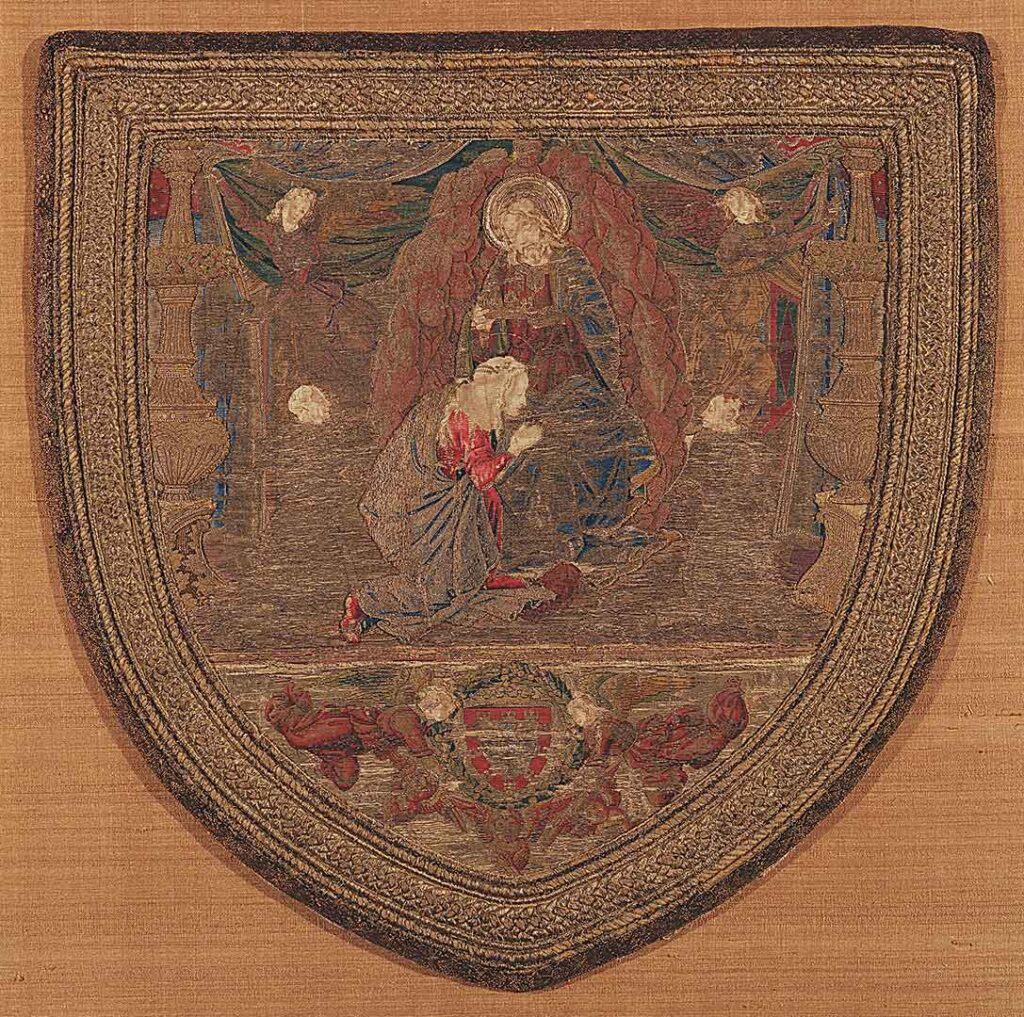Hood of a Cope with “The Coronation of the Virgin”
Sandro Botticelli; Ricamatore fiorentino del XV secolo , 1490 - 1495
Description

This hood of a cope (the top garment worn by a priest for church services) is splendidly embroidered with silk and gold. Its refined preparatory drawing, datable between 1490 and 1495, is attributed to Sandro Botticelli.
The upper part depicts the Coronation of the Virgin, bordered on either side by two candelabra: Christ, surrounded by seraphim, crowns the Virgin, kneeling with joined hands. The scene takes place inside a pavilion, with curtains held open by two angels. On Mary’s sides two figure are also kneeling, their heads adorned with the rayed nimbus, characteristic of the blessed; they wear the habit of the Gesuati and are to be identified as Giovanni Colombini, founder of the lay Gesuati congregation, and Antonio Bettini (or Antonio Tavelli da Tossignano).
At the bottom of the cope hood, two angels hold a laurel wreath with a shield surmounted by a crown: this is the coat of arms of the Aviz’s dynasty, which ruled Portugal between 1383 and 1580,. During the restoration it was found that the embroidery of the upper part with the Coronation of the Virgin, and the one of the lower part with the coat of arms, though coeval, were in fact not originally intended for the same object, and were assembled only a shortly after their execution.
The cope hood was purchased in 1889 for 200 liras by Giuseppe Bertini, the first director of the Poldi Pezzoli Museum, from the Milanese antiquarian Giuseppe Goldberg
Data Sheet
Author
Sandro Botticelli, 1445- 1510
Date
1490 - 1495
Material and technique
silk, gold, linen,
Measures
46.5 cm x 46.2 cm
Acquisition
1888
Inventory number
0444
location
Stanza dei tessuti
Like the Fresco Room and the Collector’s Room, the Textile Room is also dedicated to hosting temporary exhibitions. Over time it has changed several uses: after World War II it was prepared for the display of carpets and archaeological objects, then the Museum’s textile collections.
collection
Textiles
The heterogeneous textile collection includes important antique Persian carpets, Renaissance tapestries and 180 textiles dating from the 14th to the 18th century. Among them, rare Italian velvets and precious 15th century Lombard altar frontals. Antique Coptic textiles and Lombard and Flemish laces and embroideries, dating from the 18th and the 19th century, were acquired or received as donations.
